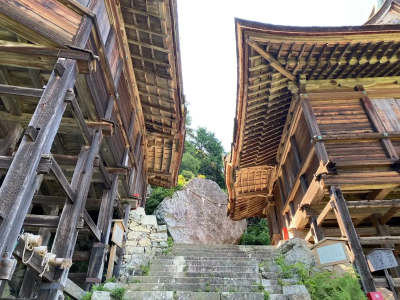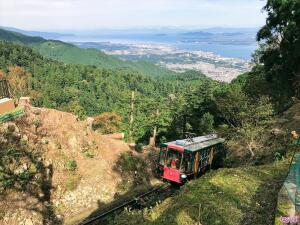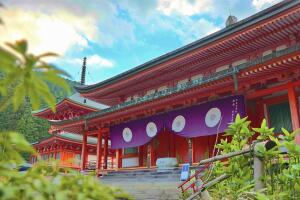By Train
— From Otsu: Take the JR Kosei Line from Ōtsu Station to Hieizan-Sakamoto Station (about 10 minutes). From Hieizan-Sakamoto Station, it’s a 10-minute walk to the shrine.
— From Kyoto Station: Take the JR Kosei Line to Hieizan-Sakamoto Station (about 15 minutes). From there, it’s a 10-minute walk.
— From Osaka Station: Take the JR Tokaido Line to Yamashina Station, then transfer to the JR Kosei Line to Hieizan-Sakamoto Station (about 40–50 minutes in total).
By Bus
— From Sakamoto Station (Keihan Line): Take the Kojak Bus to the Hiyoshi Taisha-mae stop (5 minutes).
By Car
About 30 minutes from Kyoto and 1 hour from Osaka via the Meishin Expressway (exit at Otsu IC or Kyoto-Higashi IC). Parking is available near the shrine.





Hiyoshi Taisha Shrine
Hiyoshi Taisha (日吉大社), a historic shrine complex at the foothills of Mt. Hiei, is the head of nearly 4,000 shrines across Japan. Dating back to the Kojiki chronicle of the 8th century, it was once the largest shrine complex in Japan. It became closely tied to Enryakuji Temple, a major Buddhist institution, until Oda Nobunaga burned it down in 1571. Later rebuilt under Toyotomi Hideyoshi, the shrine also played a key role in the development of Sannō Ichijitsu Shinto, influencing Japan’s religious history.
In 1868, government reforms led to the separation of Shinto and Buddhism, changing the shrine’s deity hierarchy and removing Buddhist elements. Today, visitors can explore its seven major shrines, unique architecture, and vibrant Sannō Festival, a tradition reflecting centuries of cultural fusion.
Hours and Fees
- Opening hours
-
9:00 AM to 4:30 PM
- Closed
-
No closing days
- Entrance fee
-
500 yen
Getting there
Google MapsResources
Nearby
-
Reviews
There are no reviews
Write a review

